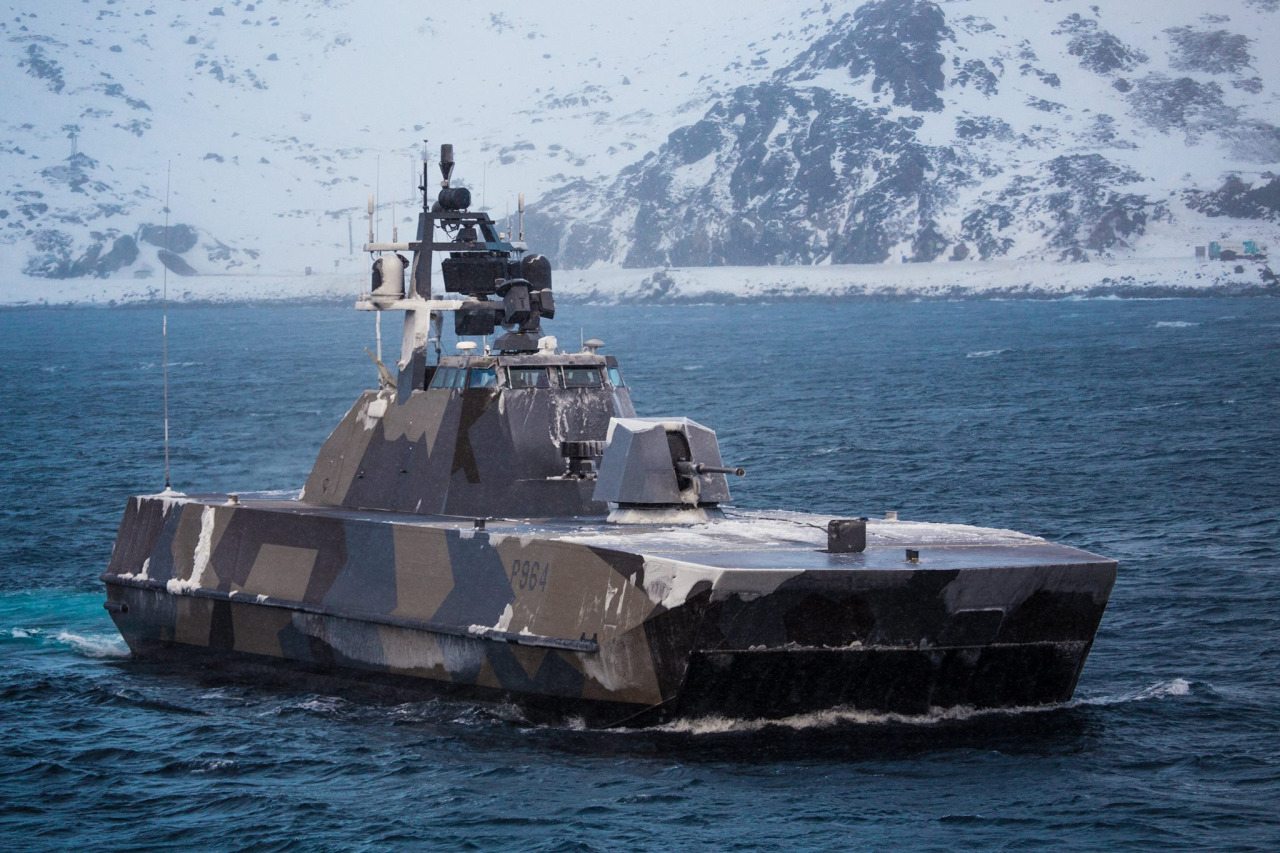This article will look at Norway’s latest coastal defence vessels: the Skjold-class fast missile corvette.
The Skjold is a class of fast missile corvettes developed and constructed in Norway for the purpose of effectively and efficiently countering the threat of frigates and destroyers that encroach on the Norwegian coast, especially those of the Russian Navy.
The Norwegian missile corvette is a surface effect vessel, utilising an air cushion located in between a catamaran twin-hull. Unlike other stealth vessels, the Skjold-class incorporates Radar Absorbent Material (RAM) in the construction of the load-bearing sections (hull and superstructure) instead of the usual application of RAM coating over the entire exterior of the vessel. The missile corvettes also feature a faceted profile free of right angles, enhancing the vessel’s stealth capabilities. All access points are flush with the corvette’s structures, with radar deflection screens fitted on the windows. This capability is similar to that of stealth aircraft, with more effective radar signature reduction due to the more complicated operating environment at sea; the smaller Radar Cross-Section (RCS) of the Skjold can be easily misidentified as a small yacht or barge.
The Skjold-class is powered by a Combined Gas-and-Gas (CoGaG) propulsion system of four Pratt & Whitney gas turbine engines; two ST18M 2,000kW gas turbines with two larger ST40M 4,000kW turbines, giving a total output of 6,000kW. This, coupled with the surface effect, enables the Skjold to speed across the water at 110km/h, making it the fastest armed vessel in the world today. The missile corvette is capable of outrunning and outflanking any hostile vessel, even in rough seas.
While agility and stealth are the Skjold’s most valued assets, it does not compromise on firepower. The missile corvette is armed with eight Nytt sjømålsmissil, otherwise known as Naval Strike Missiles (NSM) that are stowed in two adjacent internal weapons bays at the aft section of the deck, along with a 76x636mmR (3-inch bore) Otobreda Super Rapid auto-cannon mounted in front of the superstructure. This allows the Skjold to effectively engage and destroy surface targets up to a range of over 185km. The NSMs are constructed from composite materials for low observability signature (radar, infrared and acoustic), carry a 125kg (275.5lb) titanium alloy blast-fragmentation warhead, fly high-subsonic at sea-skimming level, and are capable of adjusting their flightpath to maneuver over and around terrain features while en route to the target. The Otobreda Super Rapid naval gun has a rate of fire of 120 rounds-per-minute, and is capable of destroying both surface targets, as well as anti-ship missiles with the use of proximity-fuzed tungsten fragmentation shells. The vessel is also equipped with two 12.7x99mm (.50-inch bore) M2HB Browning machine guns for engaging unarmoured and lightly armoured targets out to 1,800m.
Additionally, the Skjold-class missile corvette is fitted with a Rheinmetall Multi Ammunition Softkill System, which utilises decoys that emit waves in the radar, infrared, laser, electro-optical and ultraviolet spectrum to counter sensor-guided missiles before they come within effective blast radius. The Softkill System operates in tandem with, or independently of the vessel’s Command & Control (C2) module; it enables the corvette to protect itself without firing its weapons by launching decoys when the vessel’s radar and electro-optical sensors detect an incoming missile.
There are a total of six Skjold-class missile corvettes currently active in the Royal Norwegian Navy, which have replaced the 14 Hauk-class patrol boats in coastal defence service since 2009.








